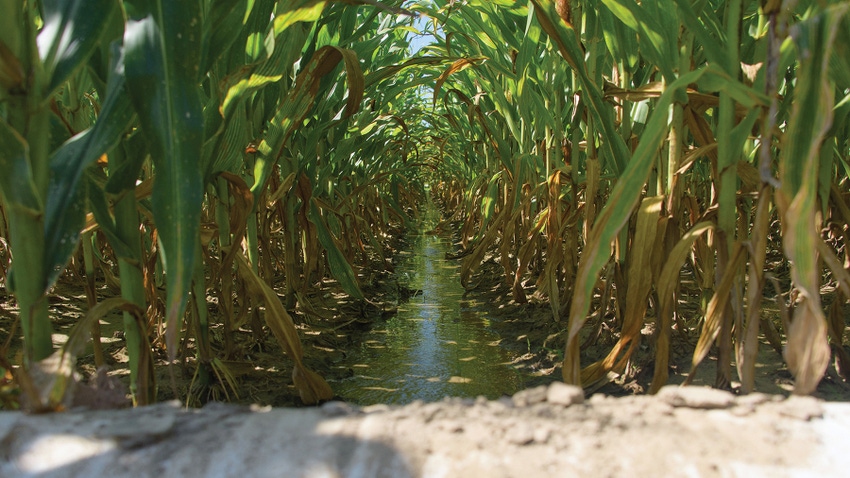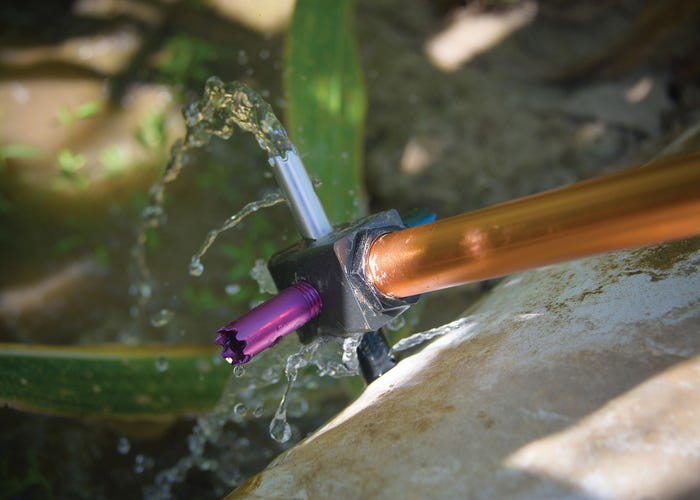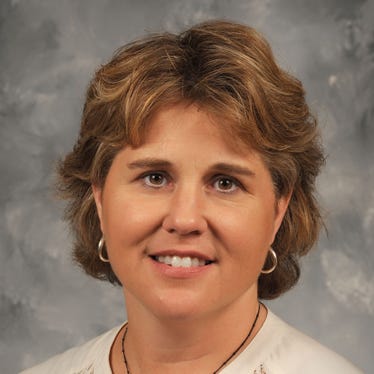May 9, 2023

Technology allows Jeremy Jack to implement management practices on Silent Shade Planting Co. in Belzoni that were impossible 15 years ago, and water use efficiency is just one way his operation has improved.
“I was telling some of the new guys on the team that when I was a kid growing up on the farm, we worked so hard, really hard, and we didn’t accomplish anything,” Jack said. “We’ve made great changes in the last 20-25 years since I’ve been farming, and I like to show people how far we’ve come.”
Efforts have focused on water conservation and the efficient operation of equipment. When good management leads to increased yields with less diesel burned and fewer man-hours spent, the positives begin to stack up.
“These things generate more income, which means more conservation, which saves money and allows us to implement even more conservation practices,” he said.
Redesigning farms
Jack and the other producers are redesigning their farms for water conservation and equipment efficiency, matching today’s massive farm machines with larger fields.
“Money encourages the adoption of conservation practices,” Jack said. “It does not happen instantly, but money allows an operation to be sustainable and run long-term.”
Jack said Silent Shade operates under the mission statement of farming for the future.

Mississippi State University researchers look at irrigation systems, tools and practices that make farming more productive while conserving water. (Kevin Hudson, MSU Extension Service)
“This idea ties all those things together that we’re trying to do,” Jack said. “A business that is actually generating income and is profitable and sustainable provides good jobs and gives back to the community.
“It’s a multi-win for conservation. It is good for the environment and good for the operation. All that ties into farming for the future,” he said.
Source of water
Jack farms in the Mississippi Delta, home of the majority of the state’s row crop farmland. There, water for irrigation is primarily drawn from the underground alluvial aquifer.
With declining water levels in the aquifer, the Mississippi Water Resources Research Institute is one of the agencies primarily focused on reversing this trend by adopting more efficient water use practices.
Jason Krutz, director of this center at Mississippi State University, said research and Extension Service staff try to develop agronomic strategies to improve yields within irrigated and nonirrigated environments.
“We look at systems, tools and practices that make us more productive. We examine the technology, tools and approaches to irrigation, trying to get the timing and delivery right,” he said.
Although Mississippi receives significant annual rainfall, irrigation of cropland is necessary because much of the rain in Mississippi does not fall during the growing season.
“Irrigation is the chief insurance policy for yield stability,” Krutz said. “It sets the base floor for yield and allows growers to reliably market their crop.”
Move to irrigation
In the 1980s, much of Mississippi’s crop acreage moved from nonirrigated to irrigated crop production. Today, about 50% of the state’s agricultural land is irrigated, and 40,000 to 50,000 acres of irrigation are added each year.
Since 2012, MSU has been researching, advocating and educating on ways to improve water use.
Zach Reynolds, Extension precision agriculture research project manager, said the regional role of the water institute allows it to impact irrigation practices beyond state lines.
“We are able to implement these technologies and verify them on a landscape scale,” Reynolds said.
Drew Gholson is an Extension irrigation specialist at MSU’s Delta Research and Extension Center in Stoneville and director of the National Center for Alluvial Aquifer Research.
“Putting a soil moisture sensor in the ground doesn’t save a drop of water,” Gholson said. “Knowing how to use the soil moisture sensors to know when to irrigate is how you save money.”
Sensor program
Extension created the Advancing the Adoption of Soil Moisture Sensors program to demonstrate in on-farm settings what a person needs to know and do to use soil moisture sensors to schedule irrigation efficiently. Participants stay in the program three years, and Gholson said 100% adopt the practices once the knowledge barrier has been removed.
"Our Extension agents are trained to go out and work one-on-one with growers, showing them how and where to install sensors and what to do with the data,” Gholson said. “We have to increase a person’s trust in what the sensors are saying so they can make decisions based off it. And we have to help them trust themselves to make the right decisions.”
Research indicates these Extension efforts are paying off.
“We have published data showing the effectiveness of the technologies we are advocating for, and the U.S. Geologic Survey has modeled our data and showed significant, positive slowing of the decline,” Krutz said.
While it may seem that water conservation is important for farmers and those in the ag industry, it actually affects every Mississippian, said Nico Quintana, Mississippi Agricultural and Forestry Experiment Station water economist at the Delta Research and Extension Center.
“Irrigation efficiency is at the core of feeding a growing population,” Quintana said. “These practices are relatively low cost and help slow down the rate at which the aquifer is depleted, which buys us time to develop the solutions that will ultimately preserve the aquifer.”
Little things add up, he said.
“In water conservation, a lot of people doing a little does plenty,” Quintana said.
Groundwater decline
Revolutionized farming methods and extensive irrigation made food abundant and inexpensive, but irrigated acreage is starting to recede in places where groundwater has started to decline.
“This means there is pressure in places with water available to increase production and as a consequence, water use,” he said. “This means that producers must get the most out of every drop of water they apply.”
Irrigation efficiency, or using water more effectively and reducing waste, may slow the depletion of alluvial aquifers, such as the Mississippi River Valley aquifer, but it does not solve the problem.
“The solution inevitably passes through alternative sources: surface water when available; capturing, storing and reusing rain and irrigation runoffs; or directly injecting water in the aquifer via managed aquifer recharge infrastructure,” Quintana said.
Source: Mississippi State University Extension Service
About the Author(s)
You May Also Like






